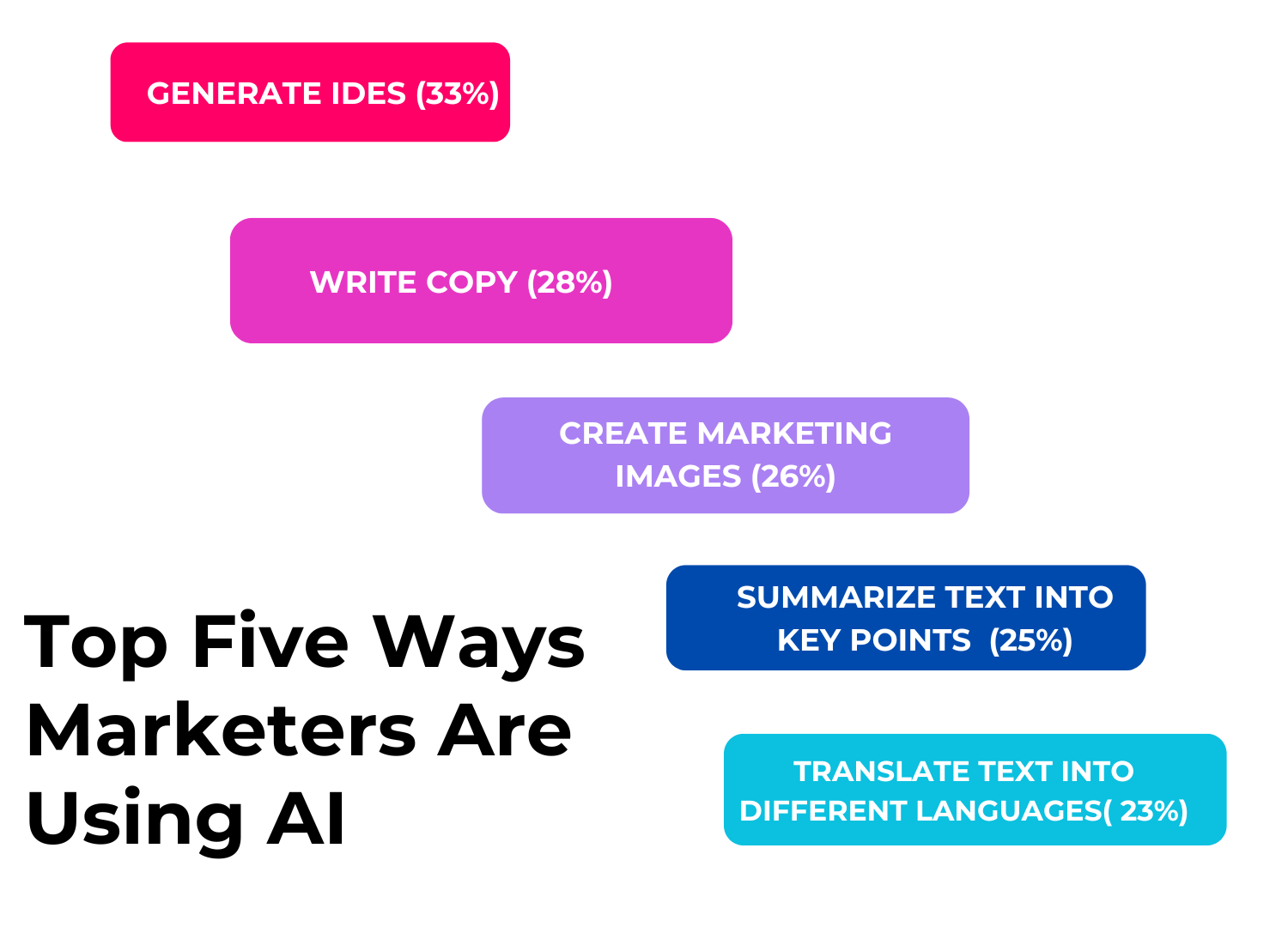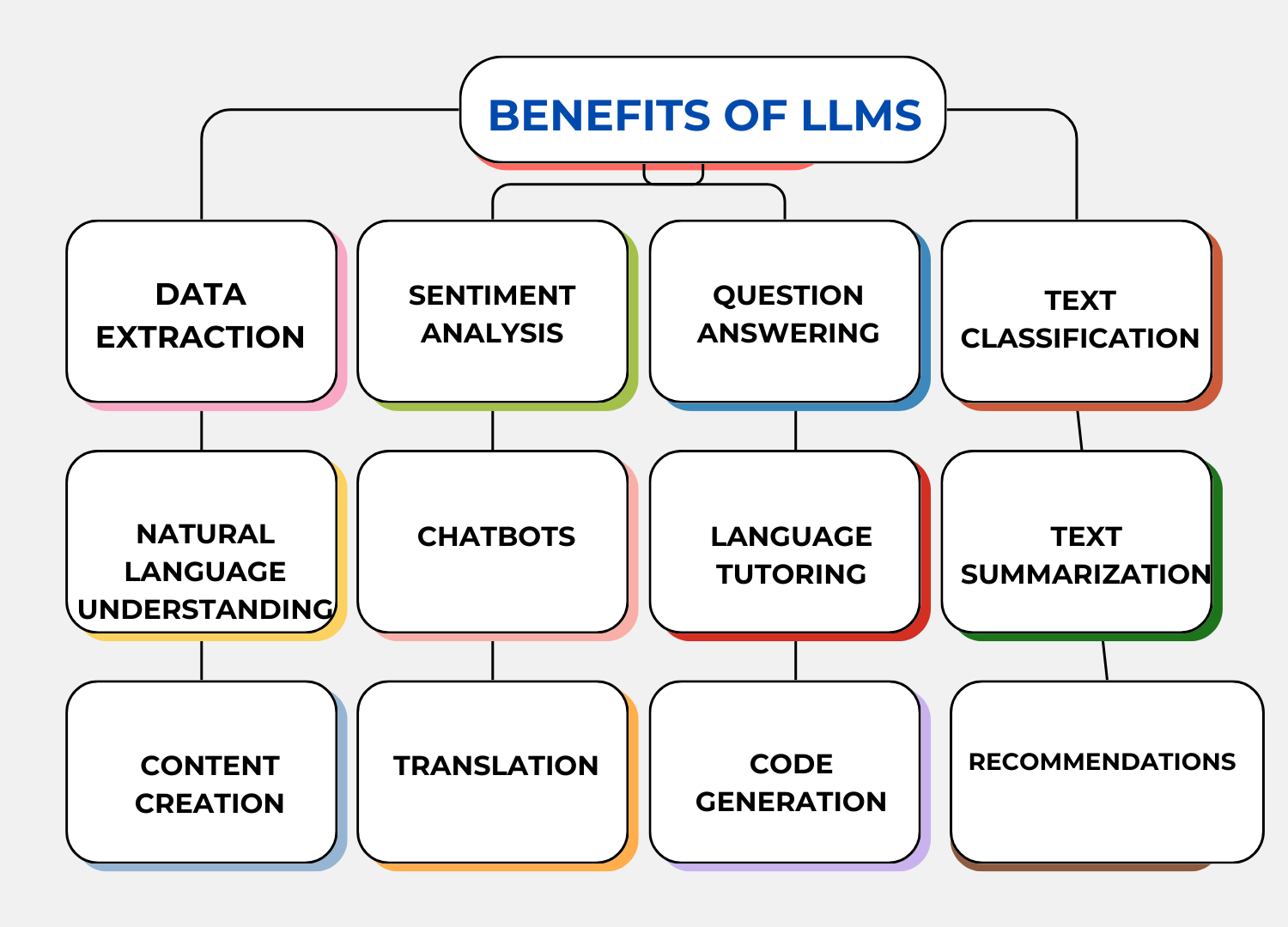Table of Contents
In the current digital world, content is king. The constant need for material and the desire for creativity in its production are based on this. Companies want to stand out in the market. This is done by coming up with creative methods to step up their digital marketing game. Using large language models is one of the digital revolution’s most revolutionary tools. With the use of advanced AI, LLMs are revolutionizing the types of information that may be created, altered, and distributed. The models are extremely complex systems, not just algorithms, that use training data to comprehend and produce language in a human-like manner. Organizations can produce high-quality content that complies with SEO guidelines while also producing vast quantities of it to boost their search engine ranking by using LLMs.
By automating and personalizing content creation, LLM integration gives content strategies a competitive edge. This can be directly linked to faster production times and more cost-effectiveness, which allows businesses to use resources more efficiently.
Large Language Models represent the peak of innovation in Natural Language Processing, while Artificial Intelligence defines the cornerstone of technology. Large-scale machine learning LLM models, such as the Generative Pre-trained Transformer (GPT) and the Bidirectional Encoder Representations from Transformers (BERT), are designed to mimic human comprehension, prediction, and production of text by using a large amount of training data. They are therefore a priceless resource for any content creator trying to provide high-quality, engaging, and relevant content at scale.
What are Large Language Models?
An algorithm for deep learning that can handle a wide range of natural language processing (NLP) tasks is called a large language model (LLM). Large language models are vast because they are trained on enormous datasets and employ transformer models. They can now recognize, translate, forecast, or create text or other content as a result.
Neural networks, often known as large language models, are computer systems that draw inspiration from the structure of the human brain. These neural networks function through a layered network of nodes, akin to neurons. According to projections, the global LLM market will reach $259,8 million by 2030, up from $1,590 million in 2023. In the years 2023–2030, the CAGR will be 79.80%.
Large language models are not only capable of teaching artificial intelligence applications to human languages but they can also be trained to do a wide range of activities such as deciphering protein structures and generating software code. Large language models need to be pre-trained and then fine-tuned to tackle challenges related to text categorization, question answering, document summarizing, and text generation, just like the human brain. AI solution providers‘ ability to solve problems can be used in industries including healthcare, banking, and entertainment. Large language models are useful for a range of applications, including chatbots, AI assistants like Gemini AI, translation, and more.
Large Language models also include a lot of parameters. These parameters are like the memories the model builds up during training. Consider these parameters as the knowledge base of the model.
Partner With Us To See How LLM’s Can Drive Results
Knowing How to Think Creatively: Unlock LLMs’ Potential
Human inventiveness and ingenuity are fundamentally dependent on creativity. It comprises the capacity to come up with novel ideas and tackle issues from multiple perspectives. It makes connections between ideas that don’t initially seem linked. LLM solutions can aid in the understanding of the subtleties of creative thinking, which is essential to achieving its full potential. Because AI LLMs are capable of processing and producing writing that resembles that of a human, they are useful instruments for enhancing creative thought.
Fundamentally, creative thinking involves deviating from familiar ways of thinking and exploring unfamiliar ground. LLMs can support this process by offering a plethora of knowledge, perspectives, and recommendations that might challenge our preconceptions and broaden our ideas of what is feasible. Using LLM solutions gives us access to a large body of information that spans several fields, domains, and points of view.
Using LLMs as Tools for Creative Thought in Brainstorming Sessions
It is common practice to promote creativity and innovation through brainstorming sessions. These meetings have typically depended on the group or individual brainstorming skills of participants. But now that AI LLMs have been around, we have an even more effective instrument to enhance and support the brainstorming process. When we use LLMs as instruments for creative thinking during brainstorming sessions, we can unleash a multitude of benefits and fully realize their immense potential.
Giving Immediate Information
The utilization of LLMs’ expertise and information retrieval skills is one of the most crucial ways they may contribute to brainstorming sessions. Large datasets spanning many subjects and domains were used to train LLMs. This implies that during brainstorming meetings, individuals can supply knowledge instantly. When a query or insight is needed, participants can interact with an LLM AI to obtain pertinent data, figures, examples, or historical background. The abundance of data at our disposal can provide a strong basis for idea generation, brainstorming, and decision-making.
Offering Advice
LLMs are also quite good at suggesting things and coming up with prompts. When LLMs are given incomplete concepts, keywords, or even just straightforward questions, they might be as creative accelerators. They could provide a plethora of alternative paths, strategies, or resolutions that people would not have thought of. In brainstorming meetings, LLMs can generate new insights and innovative ideas because of their ability to think beyond the box. By stretching the frontiers of what is conceivable and escaping conventional cognitive habits, this kind of use of LLM AI can help.
Streamlining Concepts
The potential of an artificial intelligence development company to assist with concept development and refinement is another advantage of utilizing them in brainstorming sessions. An LLM can receive participants’ initial ideas and then make suggestions for how to develop, enhance, or refine them. The synergistic relationship between human creativity and LLM AI skills can lead to improved and refined concepts, which in turn can produce more creative and resilient solutions.

Boosting Your Imagination: Leveraging LLMs for Idea Generation
Using LLMs to boost your creative process requires having a clear idea of your aims and objectives from the start. Clearly define the issue or subject of your study and indicate the precise areas in which you are searching for novel ideas or creative solutions. By focusing more narrowly, you can utilize large language model development services more effectively and with more targeting.
One effective method to optimize the influence of LLMs in brainstorming is to leverage the extensive knowledge base that is integrated within them. Use them as thorough research assistants throughout your brainstorming sessions. Enter relevant keywords into the LLM and take in the material that appears when you come across a subject, industry, or domain that piques your curiosity. Large language model development offers a plethora of information and insights that can extend your horizons, stimulate fresh thinking, and promote collaboration among many disciplines.
Accepting the chance-based character of LLMs’ recommendations is another way to make the most of them. LLMs can generate novel and unusual ideas. Consider allowing these concepts to inspire you rather than immediately discounting them. The greatest ground-breaking concepts can come from connections that don’t appear natural or connected. Embrace the element of surprise and let the LLM models challenge the boundaries of your thinking.
Utilize LLMs as instruments for iterative refining and iteration as well. As you come up with concepts, use LLMs to investigate various viewpoints, modifications, and enhancements. Ask for assistance in developing and perfecting your first or partially developed ideas by entering them into the LLM models. LLMs might offer other viewpoints, make recommendations for improvements, or encourage you to think about different strategies. By accepting the iterative nature of the creative process and following LLMs’ guidance, you may maximize the potential of your ideas.
Unleash The Creativity That LLM’s Brings To Your Marketing Efforts
Content Marketing with LLMs
Here are some ideas for how companies can improve their marketing efforts by leveraging the potential of LLMs.
1. Customized Content Development
LLM AI is adept at sorting through large amounts of data. This is to produce content that appeals to particular target audiences. This makes it possible for marketers to create precisely tailored social media posts and email campaigns. They can also create advertising material that increases engagement and conversion rates.
2. Efficient Social Media Management
Marketing professionals might benefit from LLM models’ proficiency in comprehending and analyzing natural language when it comes to effectively managing their social media presence. LLMs give marketers back significant time by handling tasks like creating new content, scheduling posts, and even crafting responses to user comments. This allows marketers to concentrate on strategy and analysis.
3. Better Techniques for SEO
LLMs are adept at identifying search trends and producing material. This material is compliant with the most recent SEO best practices. This can improve a company’s overall online presence. It draws in more organic traffic and helps them rank better in search results.
4. Creative Adwords
By utilizing LLMs’ creativity, marketers can create distinctive and appealing ad copy that successfully grabs the attention of their target audience. With the flexibility of LLMs, marketers may test and choose from a variety of linguistic styles, tones, and messaging variations.
5. Data-Informed Market Analysis and Understanding
sifting through enormous databases to uncover priceless insights that provide marketers with a better grasp of their target market, rivals, and market trends. However, this is a laborious manual procedure. LLMs can aid in this task’s automation. Afterward, by using this data, marketing tactics can be improved and data-driven decisions can be made.
6. Creative Headline Creation
LLM development refines these ideas to create new, captivating headlines by understanding the context and structure of effective headlines. By remaining abreast of linguistic and industry-specific changes, they may spot patterns and trends in previous headlines and ultimately maximize click-through rates and audience engagement.
7. Planning a Strategic Content Calendar
By utilizing large datasets, LLMs can be utilized to identify pertinent market trends and ideas for topics, which can help influence a carefully thought-out content calendar. Beyond just choosing a topic, LLMs recommend the best publication schedules by examining previously effective material, timing, and audience interaction patterns. In addition, they offer data-driven suggestions that take into account industry events, public holidays, seasonality, and other variables.
8. Enhanced Keyword Analysis
LLMs improve the process of keyword research by quickly evaluating large amounts of data and identifying pertinent, effective keywords for content optimization. In addition to providing popular keywords, they also consider which ones are most likely to draw in the target audience by analyzing competition, industry trends, and context. Moreover, LLMs help with the strategic placement of keywords in the text, balancing SEO best practices with readability and engagement. Content marketing is made more effective when LLMs are used for keyword research. This increases content visibility, draws in qualified leads, and simplifies the SEO process.
9. Interesting Captions on Social Media
LLMs are excellent at coming up with creative, interesting social media captions that enhance the effect of images. They create enticing, contextually relevant content by analyzing popular captions from other platforms, which encourages shares and interactions. LLM models help turn scrollers into active followers and brand evangelists by striking a balance between brevity, humor, and brand voice, strengthening your online presence.
10. Analysis of Strategic Content Gaps
Businesses can compare their content with rivals’ to find areas for improvement by using LLMs to perform thorough content gap analysis. They identify chances to produce distinctive, worthwhile content that distinguishes your brand by closely examining the material of your rivals. LLMs assess the performance, variety, relevancy, and engagement of content across a range of media, thereby highlighting areas in which your brand might differentiate itself from competitors. With the help of this AI-driven method of content gap analysis, a strategic plan for creating unique content that closes those gaps and conveys your differentiators may be developed.
11. Powerful Call-to-Action Words
LLMs can create compelling call-to-action (CTA) phrases for marketing that promote conversions. They may scan CTAs that work well on multiple platforms and compile lists of persuasive, action-oriented words that work well with various kinds of marketing collateral. LLMs create calls to action (CTAs) for emails, landing sites, and advertisements that are consistent with your brand voice and appealing to the target market. This streamlines the creative process and increases engagement and conversion rates.
12. Condensed Content Summaries
By defining objectives, identifying target audiences, enumerating essential points, providing keyword suggestions, and recommending the ideal tone for future content projects, LLMs can facilitate the production of thorough content briefs. AI in marketing means using LLMs for extra strategic direction to assure alignment with audience expectations and brand goals, facilitate smooth project kick-offs, and provide better outcomes more quickly by using past successful content and current market trends.
13. Promoting Ideas for User-Generated Content
These AI models offer creative strategies for encouraging consumers to share their brand experiences by using data from social media trends and effective user-generated content initiatives. These AI-generated tactics provide fresh approaches to content while boosting social proof, building community, and boosting brand engagement.
14. Powerful Strategies for Community Involvement
LLMs assist in customer service automation. They include practical strategies for communicating with and fostering an online community centered around your business when it comes to community engagement. LLMs use effective community involvement techniques to provide a customized plan, which can include conceiving virtual events, arranging perceptive Q&A sessions, and starting lively forum conversations.

Best practices for Marketing and Content Creation using LLM
Building an LLM like ChatGPT can be a difficult undertaking, regardless of whether you use ChatGPT LLMs or something else. But it can be simpler if the appropriate tactics are used.
Important first steps include defining a precise goal, being aware of the model’s constraints, selecting a hybrid approach, and keeping an eye on quality standards. That’s not all, though. In addition to giving instructions and context, you must progressively refine the output and double-check and confirm any facts. Each of these is an essential phase in the procedure.
1. Specify Your Goal and Intention
Setting a goal from the outset gives your interactions with large language models consistency, application, and emphasis. To acquire the desired result, you can alter the limitations, questions, and prompts you provide the model. The quality and usefulness of the produced content are improved by this customization. Setting a clear objective makes it easier to analyze and gauge the success of anything you do.
2. Recognize the Limitations of the Model
Recognizing the shortcomings of large language models is an essential first step in content creation. By doing this, you may increase the quality and dependability of the content that is generated, decrease the limitations of the language model, and make better use of it overall. It aids in establishing reasonable expectations, identifying mistakes, contextualizing information, improving prompts, exercising moral judgment, and gradually advancing the model.
3. Select a Hybrid Approach
A hybrid approach to content creation blends human management and interaction with the power of Large language model development. The two most important factors for employing large language models are the efficiency of time and resources. However, involving people in the process allows for contextual knowledge, quality assurance, and the improvement of responses.
Furthermore, people are more equipped to deal with moral dilemmas and combine ingenuity and creativity. Since humans are ultimately in charge of utilizing an LLM’s output, it is obvious that they play a significant part.
There are two methods for completing this:
- Give the LLM time to create and perfect your prompt; let it take care of the rest. Next, modify the output to conform to the policies and guidelines of your business. This situation calls for the editor to be a subject area expert as well, which can be a difficult role to fill. Furthermore, you might be better off beginning over rather than trying to edit yourself out of that mess if the output is that subpar.
- While creating material, use the LLM interactively. Consider it as an advanced writer’s helper that can assist with outlining, concept expansion, and condensing numerous ideas into a single, coherent whole. The writer’s role has been increased in this instance. However, filling it ought to be less difficult than trying to locate subject area experts who are also excellent editors.
4. Keep an eye on quality standards
Large language models are trained on enormous volumes of data, however, this does not ensure that the result:
- Is consistently truthful and unbiased.
- Provides thorough coverage.
- Fits the reading proficiency of the people in your audience.
- Has an appropriate word count.
By monitoring these data, content producers may ensure that their work is accurate and of the highest caliber while also identifying potential areas for improvement.
5. Provide Instructions and Context
Ensuring that a large language model generates accurate, trustworthy, and useful output that supports your objectives requires taking this crucial step. This is an additional justification for starting with a specific goal and intention. You can direct the model to provide more appropriate content and constrain undesired behavior or biases by describing your intended goals, specifics, or limitations. Additionally, it facilitates meeting the quality indicators you are monitoring.
6. Iteratively Improve the Product
This tactic aids in enhancing relevance and accuracy, optimizing and customizing material, identifying and resolving errors, and providing control and quality assurance. Additionally, it encourages a mindset of constant learning and improvement, which enables you to adapt to shifting consumer needs and preferences. This hands-on involvement in the content generation process ensures that the final product is accurate and up to your intended standards. Once more, this makes monitoring those quality indicators straightforward. Additionally, a writer working with the LLM and refining its output can benefit greatly from this strategy.
7. Confirm and Double-Check
Large language models don’t always speak the truth, even if they never lie. They are quite good at imitating human intelligence, but they are incapable of distinguishing between truth and falsity. Therefore, for content generated by language models to be accurate, dependable, and trustworthy, it must be checked and verified. It also aids in addressing prejudices, spotting mistakes and gaps, promoting ethical and legal concerns in content development, and addressing biases. Additionally, this tactic establishes credibility with your audience and exhibits professional honesty.
Finding the Limits of LLMs in Content Creation
As marketers went into the area of generative AI development, their limitations became evident. This was particularly valid for content production. The initial exhilaration gave way to a greater comprehension of these technologies’ limitations and possibilities, from subtle inaccuracies to obstacles in creativity.
Fabricated Content
This last year has seen the spread of dubious AI-generated “news” websites with little human monitoring. The NewsGuard team discovered 557 unmonitored AI “news” websites in 15 different languages. These websites ranged from repurposing popular news without mentioning sources to disseminating false material, such as an entirely made-up TikTok video depicting trash-filled Paris streets that received over 400,000 views in a single month.
Keep Information Private
It is possible for private data used in a ChatGPT prompt to be disclosed. Even though a single account could appear private, Samsung revealed three cases in which workers accidentally disclosed confidential information by entering it into ChatGPT LLM. Because of security concerns, Microsoft workers are not allowed to use ChatGPT. Even though Microsoft has invested a significant amount of money in OpenAI. OpenAI has assured Microsoft that security procedures are in place.
Generic Copyright Protection
In essence, artificial intelligence solutions is a highly sophisticated auto-complete program that draws its data from pre-existing online publications. It is devoid of the social understanding, emotional intelligence, and context that human writers possess. This raises a few difficult issues that are still unanswered. As an illustration:
Who owns the output produced by AI?
- – How can you ensure that content created with AI is original?
- – Which large language model (LLM) or data set is being used to create this content?
According to a decision made on August 18, 2023, by DC District Court Judge Beryl A. Howell, “only works of human creation are protected by United States copyright law.” A fundamental prerequisite of copyright is human authorship. This meant that copyright protection would not apply to content created by an AI program without human input.
Absence of Originality
Since AI content doesn’t replicate precise words and phrases, it isn’t considered plagiarism and won’t typically be detected by a plagiarism detection technology. Still, it’s a paraphrase of already written material. Many rapidly expanding digital startups are experimenting with generative AI services. And more often than not there were instances of plagiarism because of the similarities in the prompts or sources. Therefore, there is a greater chance of plagiarism in text produced by AI. Is the material you’re producing a rehash of someone else’s writing the original, credible content that Google promises to reward?
Be a Part of LLM Revolution & Be a Part of The Future of Language
Conclusion
Discovering the secrets of creative thought is an ongoing process that calls for continuous research and testing. During this journey, a large language model development company has become essential that has completely changed the way we approach ideation and brainstorming. By comprehending and utilizing LLMs, we can open up new avenues for creativity, invention, and problem-solving. LLMs serve as entry points to a myriad of knowledge and data, giving us a wealth of resources to utilize while we are creating. Their capacity to come up with original and unusual ideas pushes us to think creatively and differently. It helps in opening our minds to new possibilities. LLMs act as catalysts for inspiration, igniting linkages and connections that result in ideas and solutions that change the game.
Moreover, LLMs facilitate idea organization, assessment, and refining, which expedites and enhances the brainstorming process. They provide insightful criticism, present opposing viewpoints, and aid in the iterative evolution of concepts. LLMs help us get past mental obstacles, extend our perspectives, and point us in the direction of more workable and significant answers. Using an AI consulting company to unlock creative thinking requires not just the right technology but also the right mindset. It demands that we approach LLMs with an open mind, curiosity, and willingness to try new things. By welcoming the unexpected, being receptive to other viewpoints, and fostering a collaborative environment, we may fully realize the potential of LLMs to drive innovation.
FAQs
Is LLM able to produce original content?
With countless possibilities, LLMs can be used to create creative text formats like emails, letters, music, code, poems, and more. This can be applied to produce fresh, inventive works of art and entertainment or to enhance the quality of existing content.
What does a large language model involve when producing content?
Our interactions with and use of technology for content creation have changed significantly. This is with the advent of Large Language Models (LLMs). These sophisticated AI systems can understand, produce, and interact with human language. That too in ways that were previously thought to be impossible.
Can LLMs produce original ideas?
LLMs are trained on vast volumes of textual material to comprehend human language and produce responses that make sense in the context. Their remarkable capacity to acquire knowledge from a vast array of sources allows them to offer insightful opinions, recommendations, and even entirely original concepts.
What are the advantages of using LLMs such as ChatGPT?
It combines natural language processing and natural language generation to understand and produce natural human language text. Since machines cannot understand the nuances and complexities of language, GPT-3 has been trained to write authentic human writing, something that has previously proven challenging for them.
What is the process of creative marketing?
Advertisers use creative marketing as a tool to reach a target demographic. A service, product, or event is brought to light by employing a variety of techniques to craft a compelling message that appeals to users. Creative marketing includes several elements such as music, artwork, design, and symbolism.






